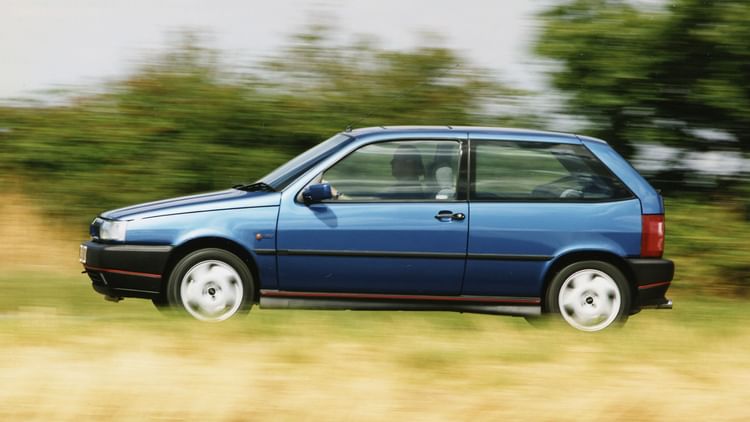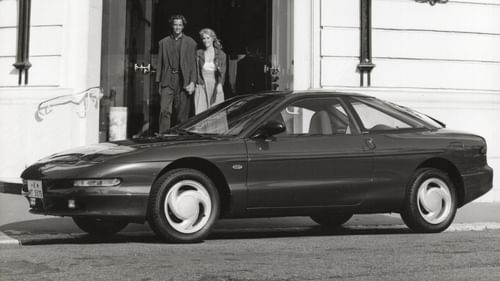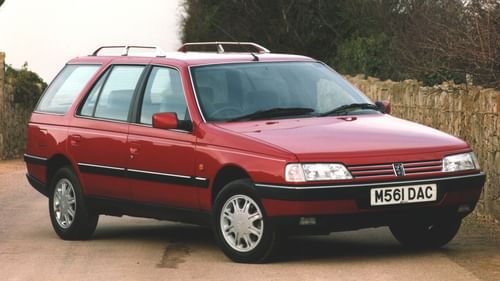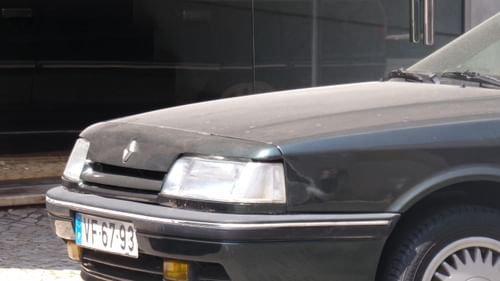10 of the best forgotten hot hatches

With the possible exception of the overworked and undervalued people carrier, the hot hatch is the car at most risk of death before retirement. Live fast, die young, that’s the hot hatch motto. If a souped-up shopping trolley survives an impromptu meeting with a hedgerow, it will almost certainly face extermination by modification, terminal engine failure or rust. Cause of death: lift-off oversteer, turbo lag or VTEC just kicked in, yo.
Some hot hatches are more fortunate. The Volkswagen Golf GTI (of any generation), Peugeot 205 GTi and Ford Escort XR3i are just three examples of cars that survive in great numbers, partly due to strong sales, but also because of the nostalgia factor. These legends, along with greats such as the Renault Clio Williams and Peugeot 306 GTi-6, receive the media attention required to live out a long and happy retirement.
Here are some forgotten hot hatches of the 1970s, ‘80s and ‘90s. There are many, many others, but these are the hatchbacks that made the cut.
Updated August 2025 with new affiliate links – click them and you might just fund my next ill-advised Renault purchase.

Proton Satria GTi
Twenty-five years ago, you could walk into a Proton dealer and buy a Satria GTi. That’s a little like walking into a bingo hall to discover that the caller is a pole dancer. The racy transformation took place in Hethel, where Lotus tuned the Satria to within a plastic wheel arch extension of hot hatch perfection. Its Mitsubishi-sourced 1.8-litre 16-valve engine produced 132.7bhp (Proton’s sales material was very precise), to deliver a 0-60mph time of 7.8 seconds.
The exposed wheel arch rivets and dual rectangular tailpipes weren’t to everyone’s taste, but the Recaro seats and ‘Handling by Lotus’ badge lent the Satria GTi a dollop of respectability. As makeovers go, this is up there with anything Gok Wan has achieved.
Fancy one? See the latest Proton Satria GTis on eBay – don’t forget to budget for excuses when the neighbours see the arches.

Daihatsu Charade GTti
Good enough to be labelled ‘astonishing’ by Autocar in 1988, the Daihatsu Charade GTti put the Vauxhall Nova GTE and Ford Fiesta XR2 ‘back in the dark ages’. This featherlight challenger entered the ring like a samurai soldier in a boxing match, but its 993cc, 12-valve, twin-overhead-cam, three-cylinder engine packed quite a punch. The turbocharger boosted maximum power to 99bhp at 6500rpm, giving a power-to-weight ratio of 123bhp/tonne. It was, at the time, the world’s most powerful 1.0-litre production car.
Autocar listed the 0-60mph time at 7.9 seconds, some 1.2 seconds faster than the Nova and 1.4 seconds quicker than the Fiesta. It could even hit 100mph in an impressive 27.2 seconds, before reaching a top speed of 114mph. Motor Sport said it offered ‘astonishing performance, good road-holding and handling, and a confident posture on the road’.
Go on… check out the Charade GTtis on eBay – turbo triple fun is just a click (and possibly a tow truck) away.

Fiat Tipo 2.0 16v
Arguably the most underrated hot hatch of the 1990s, it’s a crying shame that so few examples of the Fiat Tipo 2.0 16v remain. Arriving in 1991, two years after the Tipo won the European Car of the Year award, the SEDICIVALVOLE (because everything sounds more evocative in Italian), drew power from the 2.0-litre 16-valve engine also found in the Lancia Thema. Developing 148bhp at 6250rpm, the Tipo 16v could hit 60mph in 8.1 seconds.
It reigned supreme in a hot hatch group test, with CAR saying: ‘The fact it can be so accomplished a substitute sports car, while being so good at everyday tasks – such as taking the kids to school, and hauling around the holiday luggage – nudges it ever so slightly, into the lead.’
Tempted? Browse Fiat Tipo 16vs on eBay – nab one before the tin worm does.

Citroën ZX 16v
The ZX 16v is the forgotten flagship of one of the most overlooked cars of the 1990s. When discussing the performance credentials of the Citroën ZX, it’s the Volcane, available with 2.0-litre petrol or 1.9-litre turbodiesel engines, that’s often listed as the most sporting model. This has left the ZX 16v, with its 2.0-litre petrol engine, facing a fight for survival. It’s essentially the Peugeot 405 Mi16 engine – another factor in the Citroën’s endangered status. How many cars were sacrificed in the name of a Peugeot 205 GTi engine transplant?
Compared with the Volcane, the ZX 16v was 30 percent stiffer at the back, 10 percent stiffer at the front, while benefiting from the same passive rear steer. It could turn into corners like a housefly, feeling almost rear-wheel drive in character. Lift-off oversteer was a strength or weakness, depending on which way you looked at it. The styling of the Spanish-built, three-door only ZX 16v has aged very well.
Need one? See the Citroën ZX 16vs on eBay – passive rear-steer and a whiff of petrol-soaked carpet included.

Peugeot 104 ZS
No country does junior hot hatches quite like the French. Autocar said the Peugeot 104 ZS was a ‘Cooper S with electric windows’, before claiming it offered the ‘performance that many cars up to 2 litres would be hard pressed to beat’. This power was sourced from the 1360cc engine also found in the Renault 14 TS, which was more than plenty in a car that weighed about the same as a bag of sucre.
The sharp edge at the back gave the 104 ZS a wonderfully exotic appearance, like it had just stepped off a continental rally stage. According to Autocar, its unusual shape caught the eye, with the mag adding: ‘Its performance is exceptional for the price, and the level of equipment is excellent’.
Curious? Peek at the Peugeot 104 ZSs on eBay – all the French flair of a baguette, without the crumbs.

Nissan Almera GTi
When was the last time you saw a Nissan Almera GTi on the road? You may have seen one yesterday, but the anonymous styling failed to catch your eye. Actually, your chances of spotting one are slim, because the survival rate is worryingly low. You may as well spend your lunch hour watching re-runs of the memorable advertising campaign on YouTube, when Nissan spoofed scenes from The Professionals and The Sweeney.
The Satria GTi is proof that it’s possible to turn something mediocre into magnificent, but few people were willing to give the Almera GTi a second look. It was their loss, because the 140bhp 2.0-litre engine gave the Almera a decent amount of poke, while the wizards at Nissan’s Technical Centre in Cranfield worked wonders with the chassis. Shut it!
Brave enough? See the Almera GTis on eBay – because your The Professionals reboot needs the right wheels.

Chrysler Sunbeam Ti
The Chrysler Sunbeam Ti was there at the birth of the hot hatch. As such, it went into battle against the Mk1 Golf GTI, a fight it was destined to lose. Still, it looked great, arguably better than the Sunbeam-Lotus, while the 1.6-litre Avenger engine developed a healthy 100bhp at 6000rpm. The pair of Weber carburettors hiding under the bonnet looked superb.
CAR wasn’t convinced. In a test against the Golf and Renault 5 Gordini, the Sunbeam Ti was labelled, quite patronisingly, as a ‘good attempt to build a sporting saloon’, but one that offered ‘too little to be serious competition in this company’. What Car? went further, calling it ‘stodgy and unexciting’. Chrysler had the last laugh when it teamed up with Lotus to create one of the best and unforgettable hot hatches of the era.
Old-school cool? Check out the Sunbeam Tis on eBay – twin Webers and ’70s stripes never go out of fashion.

Alfa Romeo 145 Cloverleaf
The Alfa Romeo 145 is an endangered species, but it’s pleasing to note that the Cloverleaf accounts for around two-thirds of the taxed and tested examples. The 2.0-litre 16-valve Twin Spark engine from the 155 was the perfect match for Chris Bangle’s bold ‘breadvan’ styling, reportedly penned as a replacement for the Lancia Delta. Power output was rated at 148bhp in the early cars, but this was increased to 153bhp for the phase two variant.
You could feel the spirit of the Alfasud in the way it drove, making it one of the best handling front-wheel drive cars of the decade. Also available as the equally scarce Alfa Romeo 146 Ti.
Feeling lucky? Browse Alfa 145 Cloverleafs on eBay – buy with your heart, break down with your head held high.

Toyota Corolla GT-i 16
Straight line speed isn’t all it’s cracked up to be. In a motoring world filled with average speed cameras, contraflows and more twists and turns than a Nordic noir crime drama, handling is arguably more important than pace. It’s not about how quick you can travel between the roundabouts, it’s how much fun you can have when you get there. Which is why the Toyota Corolla GT-i 16 was the ideal hot hatch for Britain.
Motor said: ‘If you appreciated the finer points of fast driving, the new Toyota probably has more to offer than anything else in its class. Its point-to-point ability bears little relation to the cold acceleration statistics and that’s down to just one thing: a truly superb chassis. Believe us. It’s the best.’ Wow.
Want one? See the Corolla GT-i 16s on eBay – it’s all about the chassis… until you find the rust.

Suzuki Swift 1.3 GTi
Suzuki used its experience on two wheels to develop the smallest 16-valve engine ever to power a production car. The tiny 1298cc twin-cam unit developed 101bhp at 6600rpm to give a power output of 78bhp per litre. It meant that this normally aspirated hot hatch could accelerate faster than many of its GTi rivals, boasting a 0-60mph time of 8.6 seconds and a top speed of 112mph.
Ventilated disc brakes at the front, coil sprung three-link torsion beam rear suspension and alloy wheels completed the junior hot hatch vibes, as Suzuki served up a prelude to a succession of sporty Swifts. Autocar said: ‘While the Swift GTi isn’t truly a serious car, it raises the level of small car technology by quite a margin and won’t be the last offering we will see from the company.’
Dare you? Search Suzuki Swift GTis on eBay – tiny car, maximum trouble.
Because you probably need another project car
Feeling nostalgic? Here’s a handy round-up of today’s forgotten hot hatches for sale right now:
- Proton Satria GTi – the one with the arches, the Lotus badge and the attitude.
- Daihatsu Charade GTti – three cylinders, two turbos’ worth of mischief.
- Fiat Tipo 2.0 16v – the Italian sleeper you forgot existed.
- Citroën ZX 16v – passive rear-steer and proper ’90s charm.
- Peugeot 104 ZS – mini French rally rep with maximum quirk.
- Nissan Almera GTi – straight from The Professionals parody adverts.
- Chrysler Sunbeam Ti – twin Webers, stripes, and 1970s swagger.
- Alfa Romeo 145 Cloverleaf – bold breadvan styling, classic Alfa drama.
- Toyota Corolla GT-i 16 – the chassis masterclass nobody talks about.
- Suzuki Swift 1.3 GTi – tiny hot hatch with a huge grin factor.
This article first appeared in issue 3 of Classic.Retro.Modern. magazine. This article contains affiliate links. If you click through and buy something from eBay, Petrolblog may earn a small commission, at no extra cost to you. It helps keep the baguette fund topped up.





